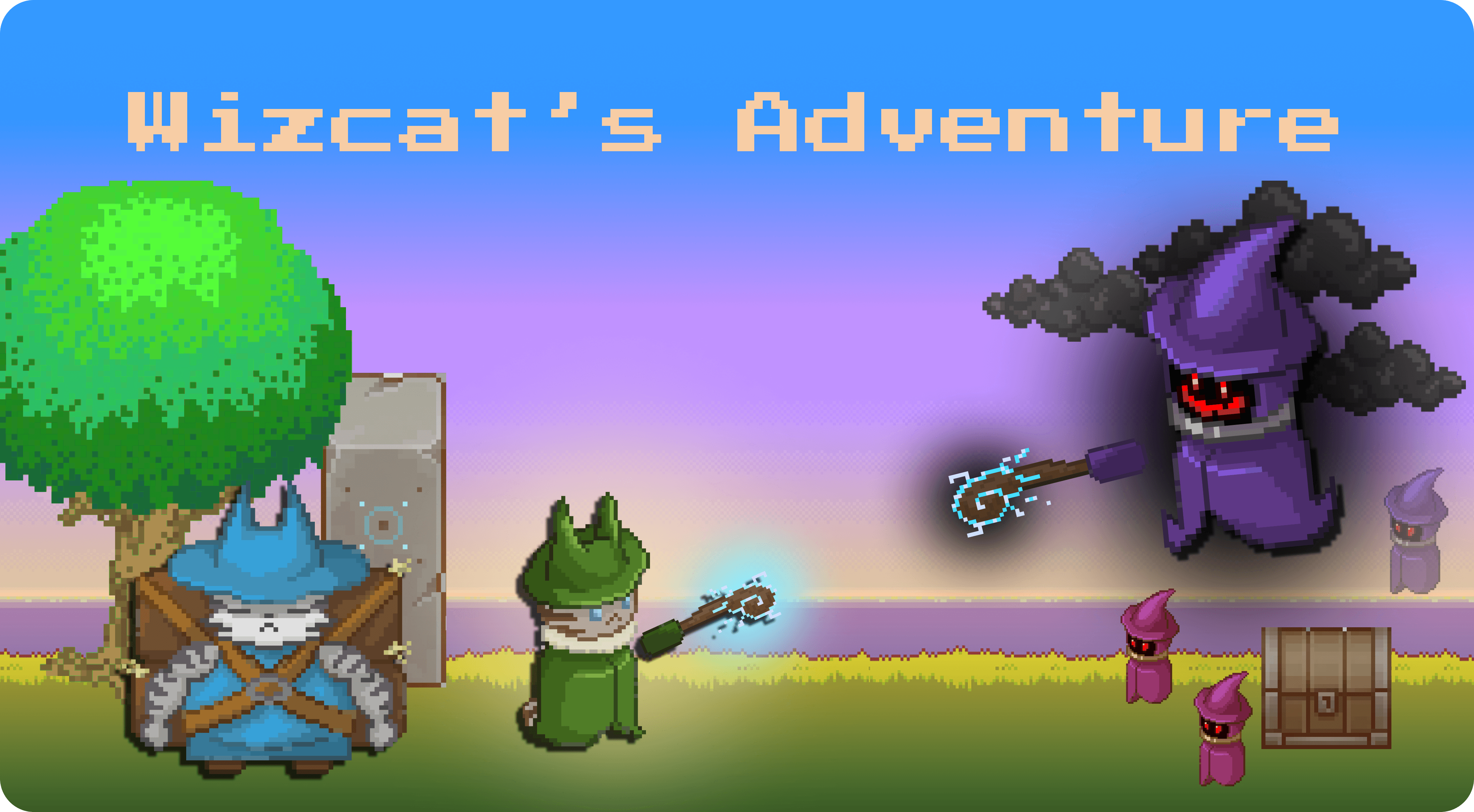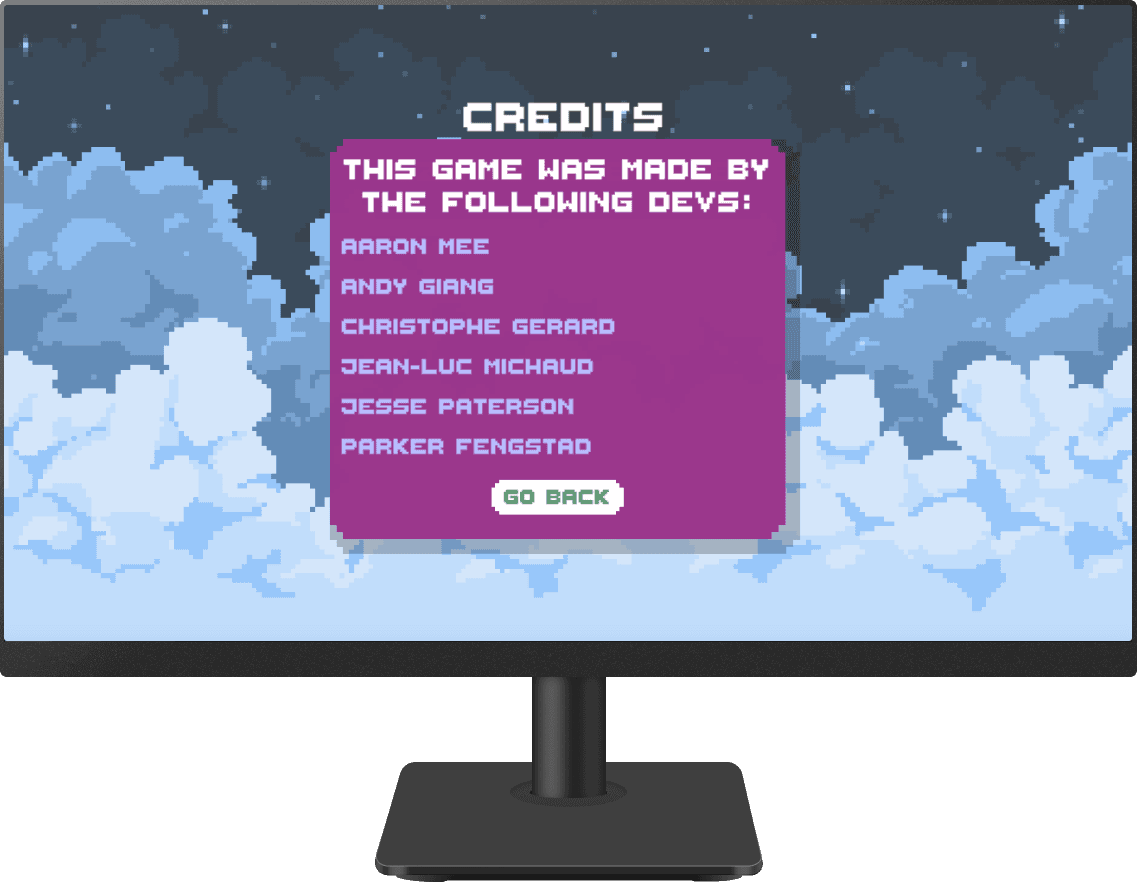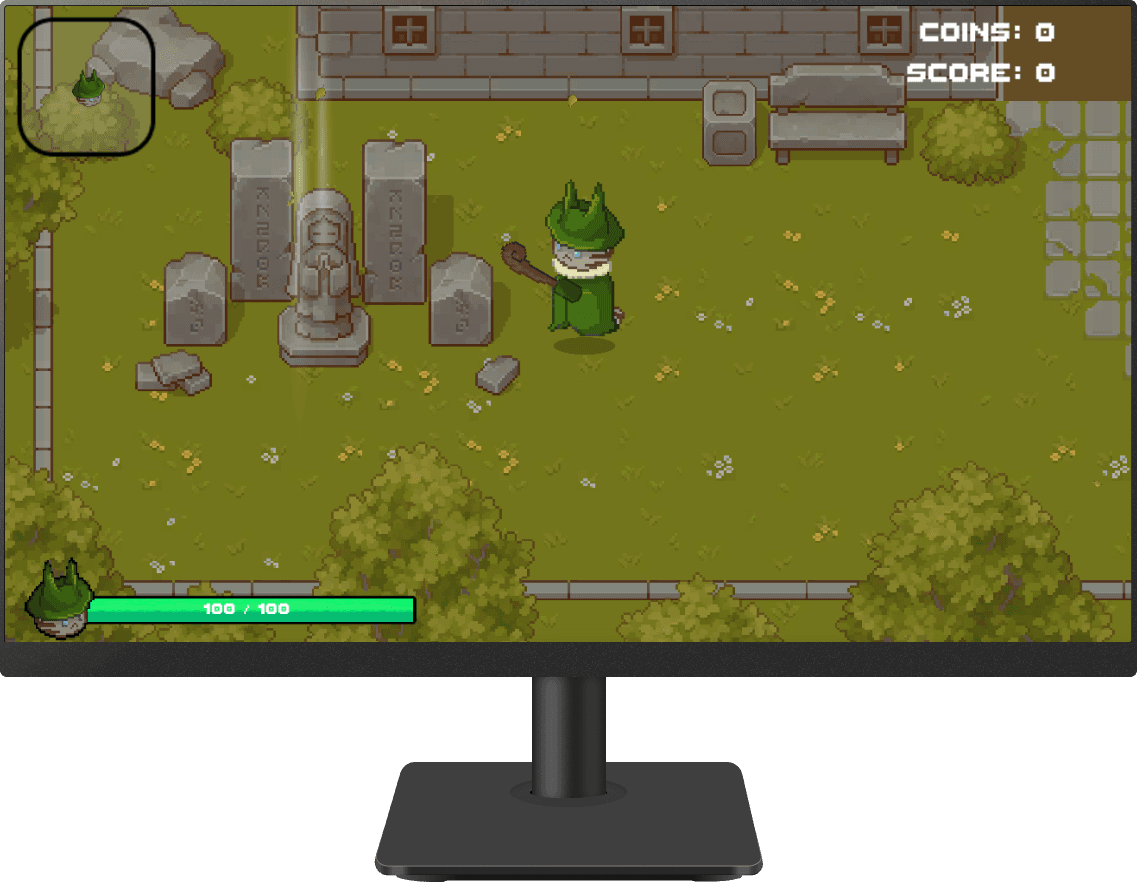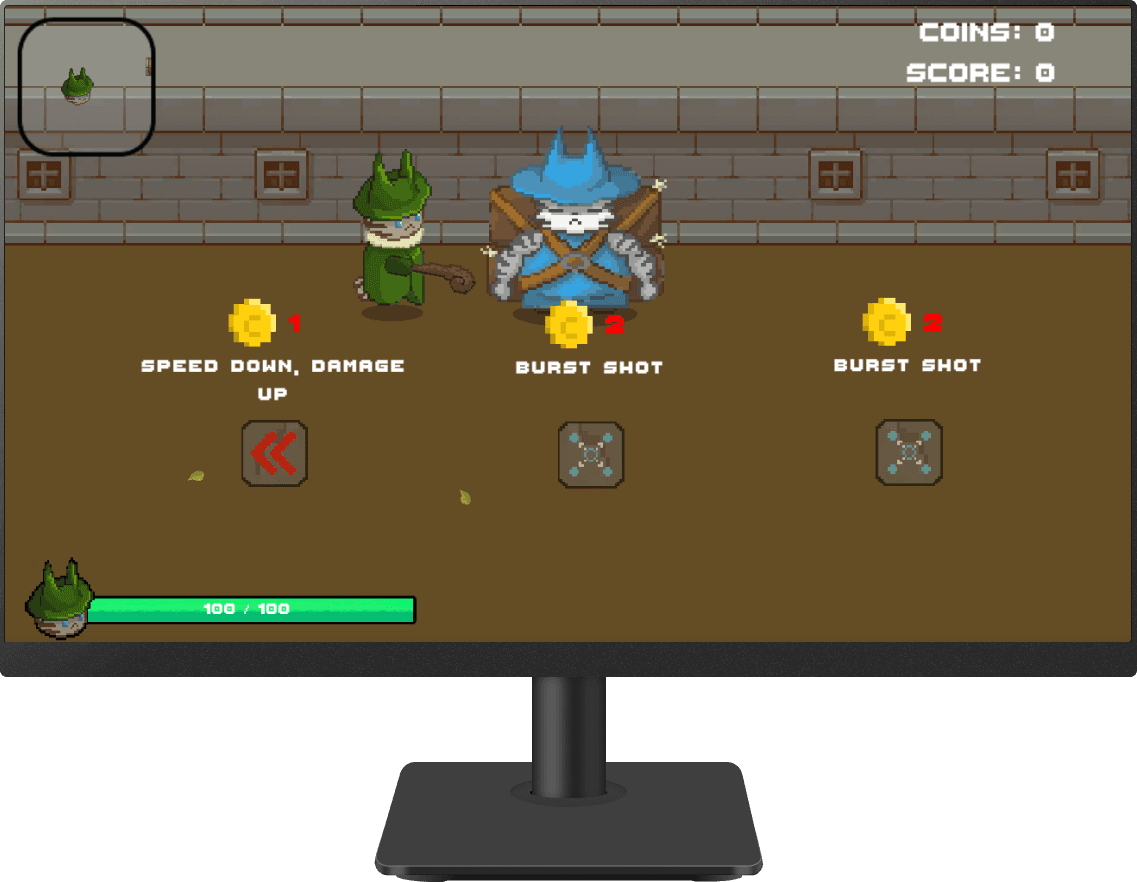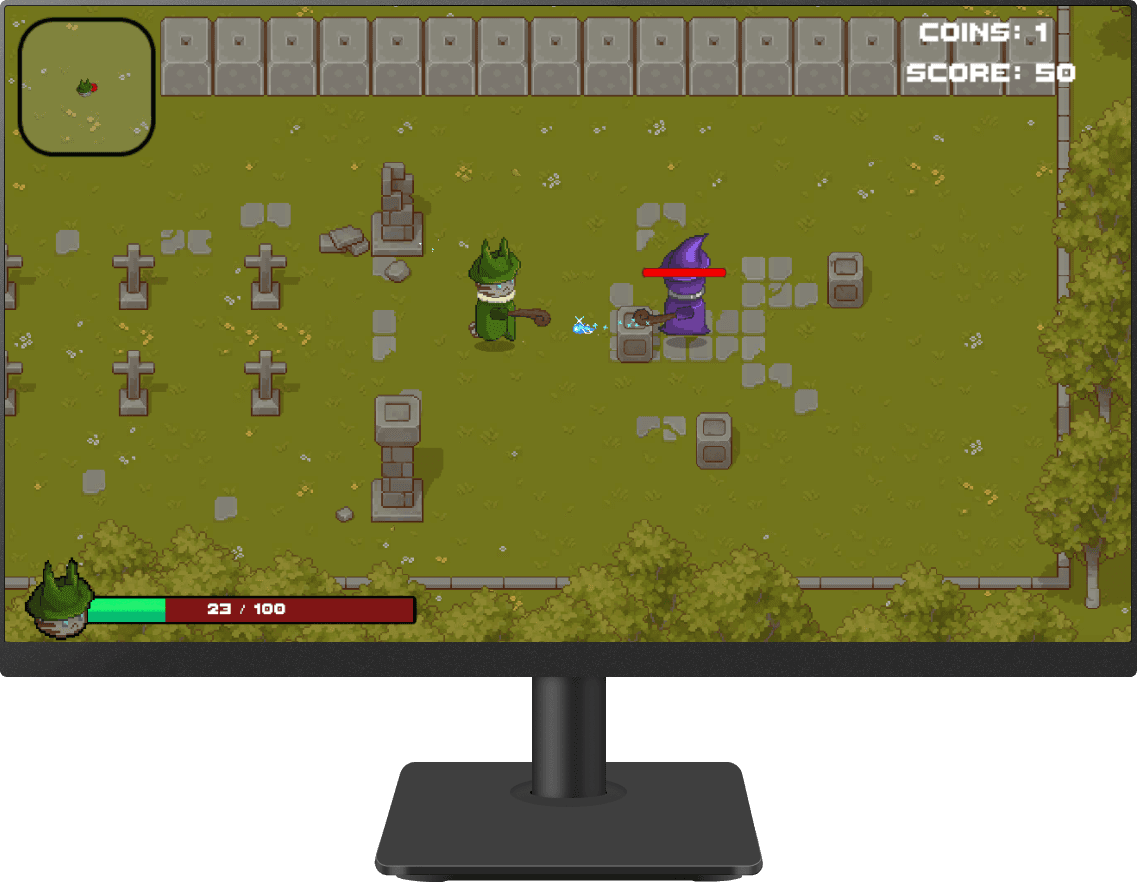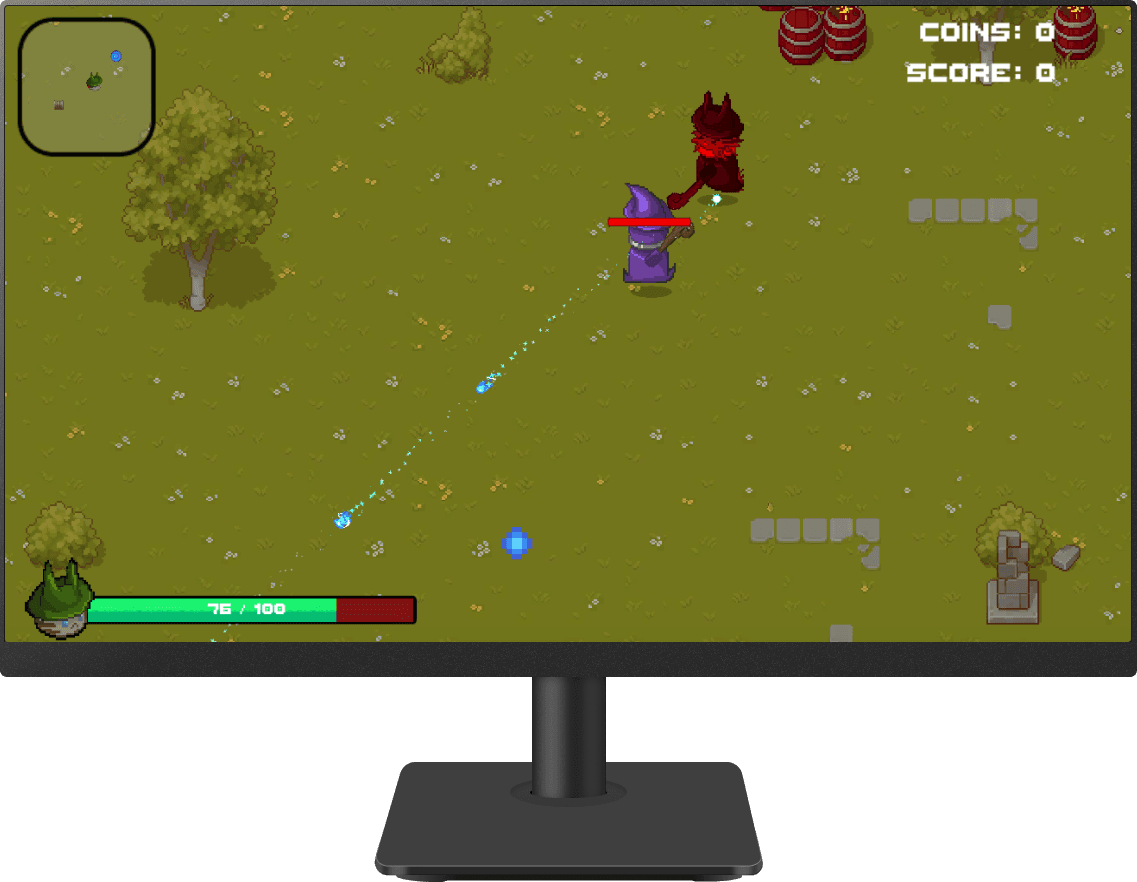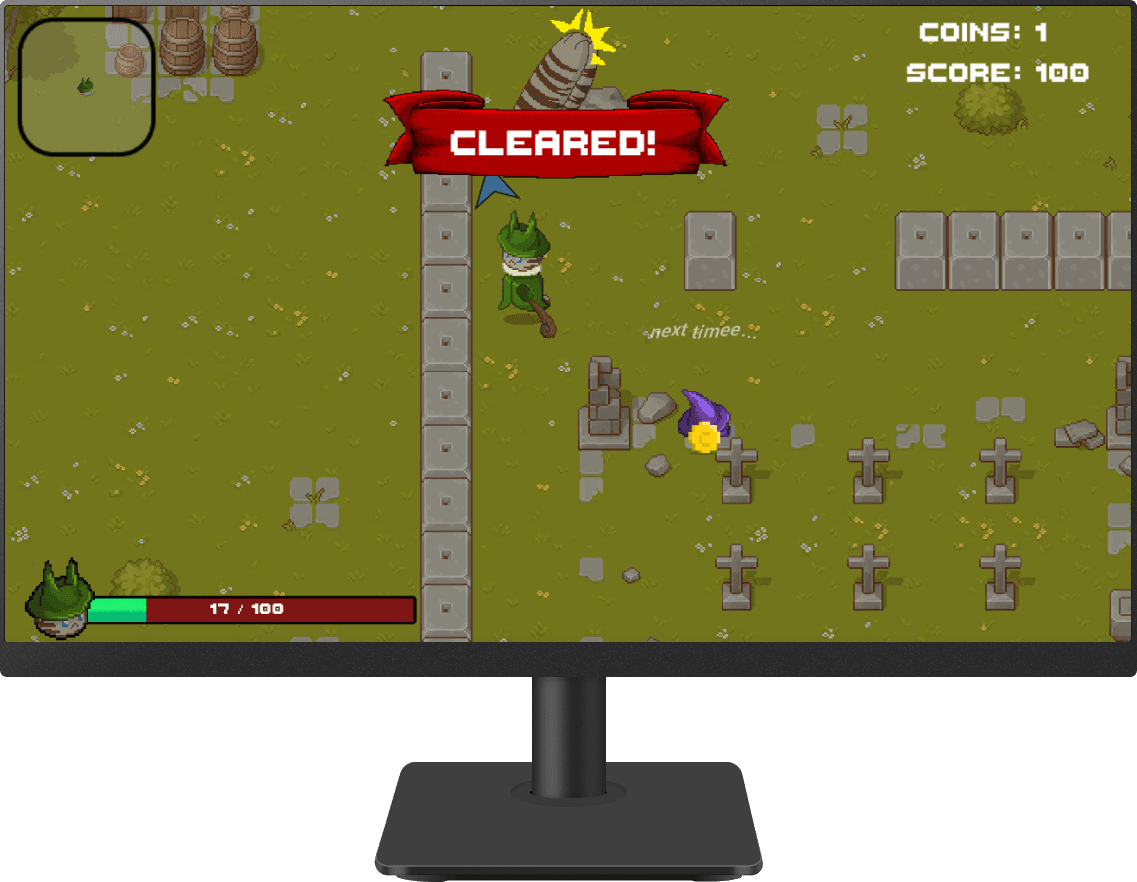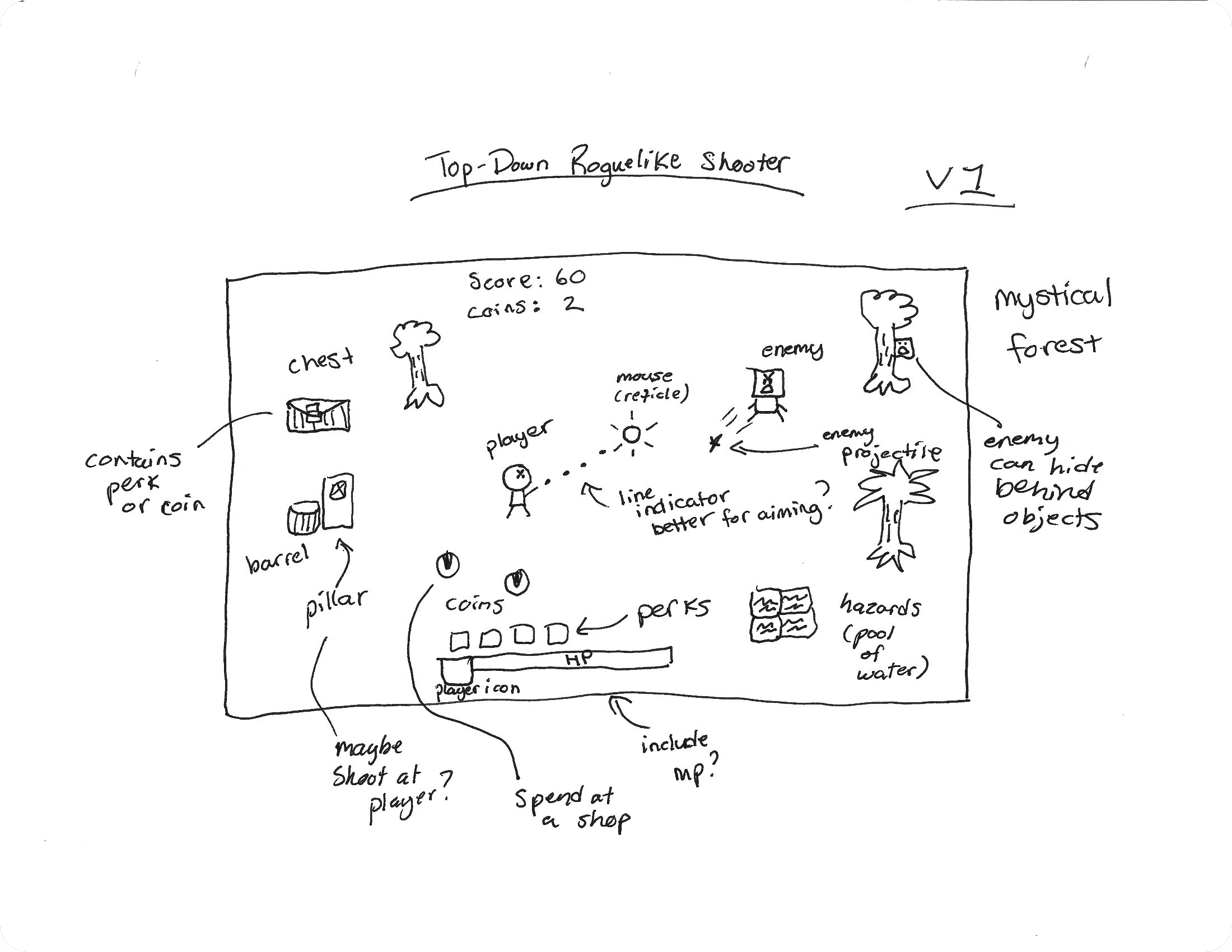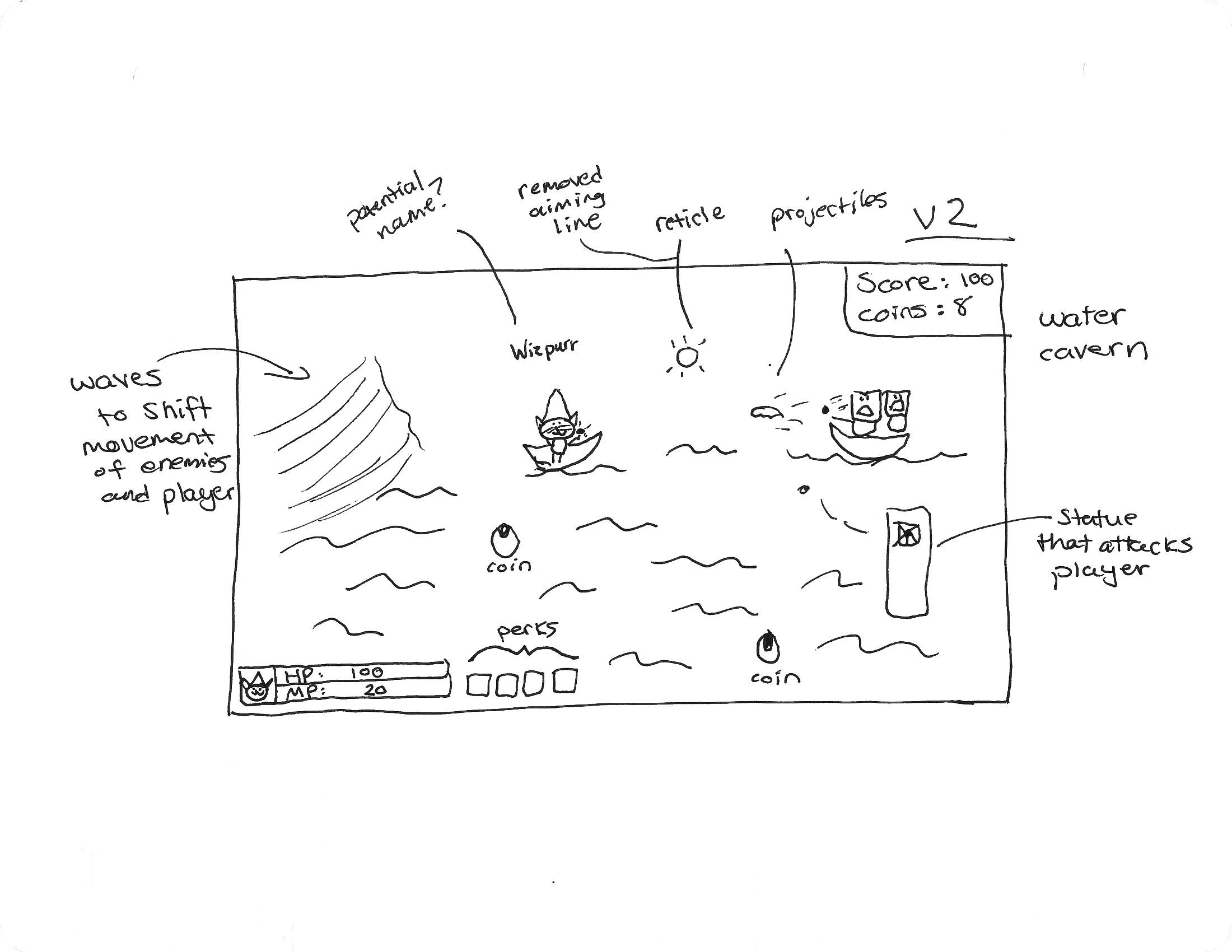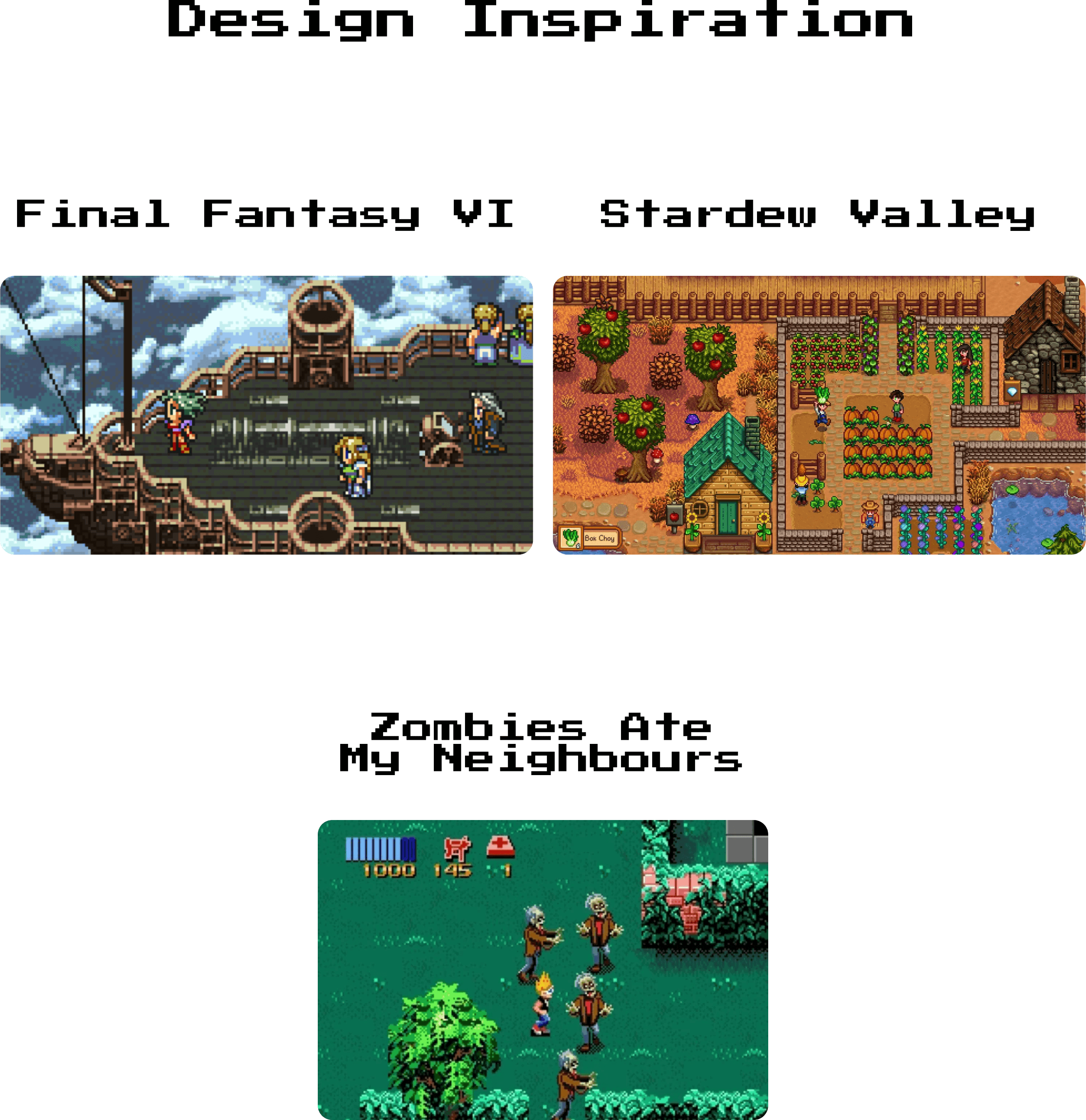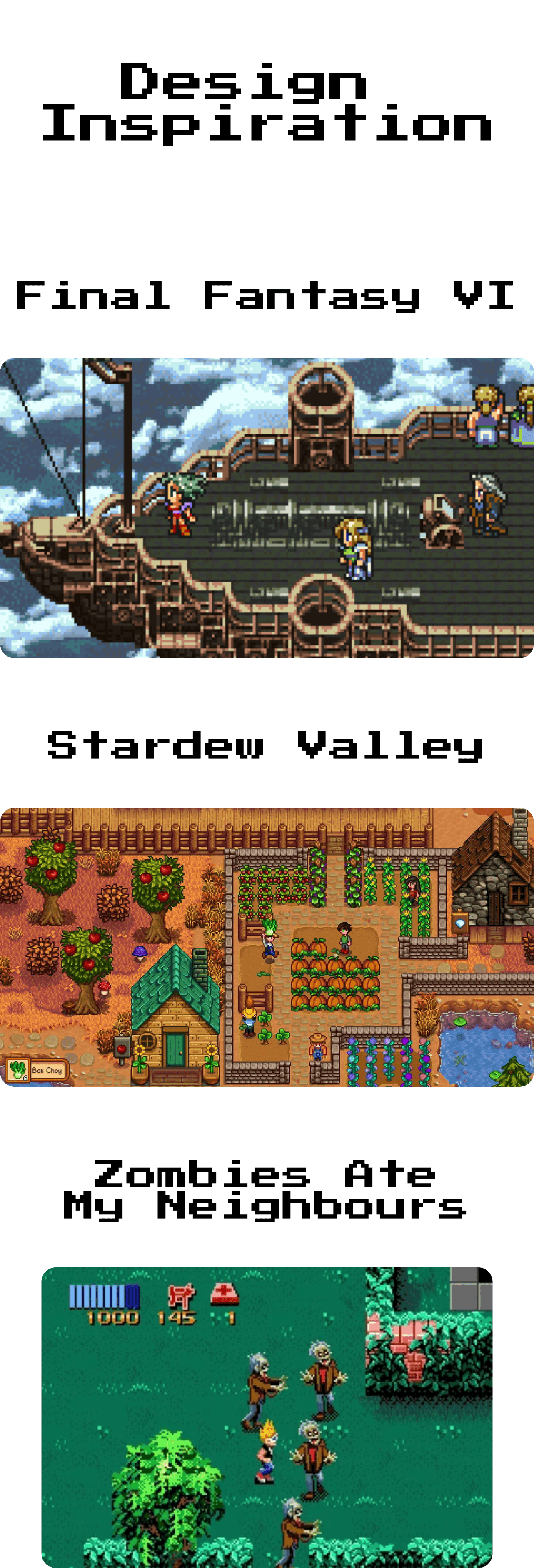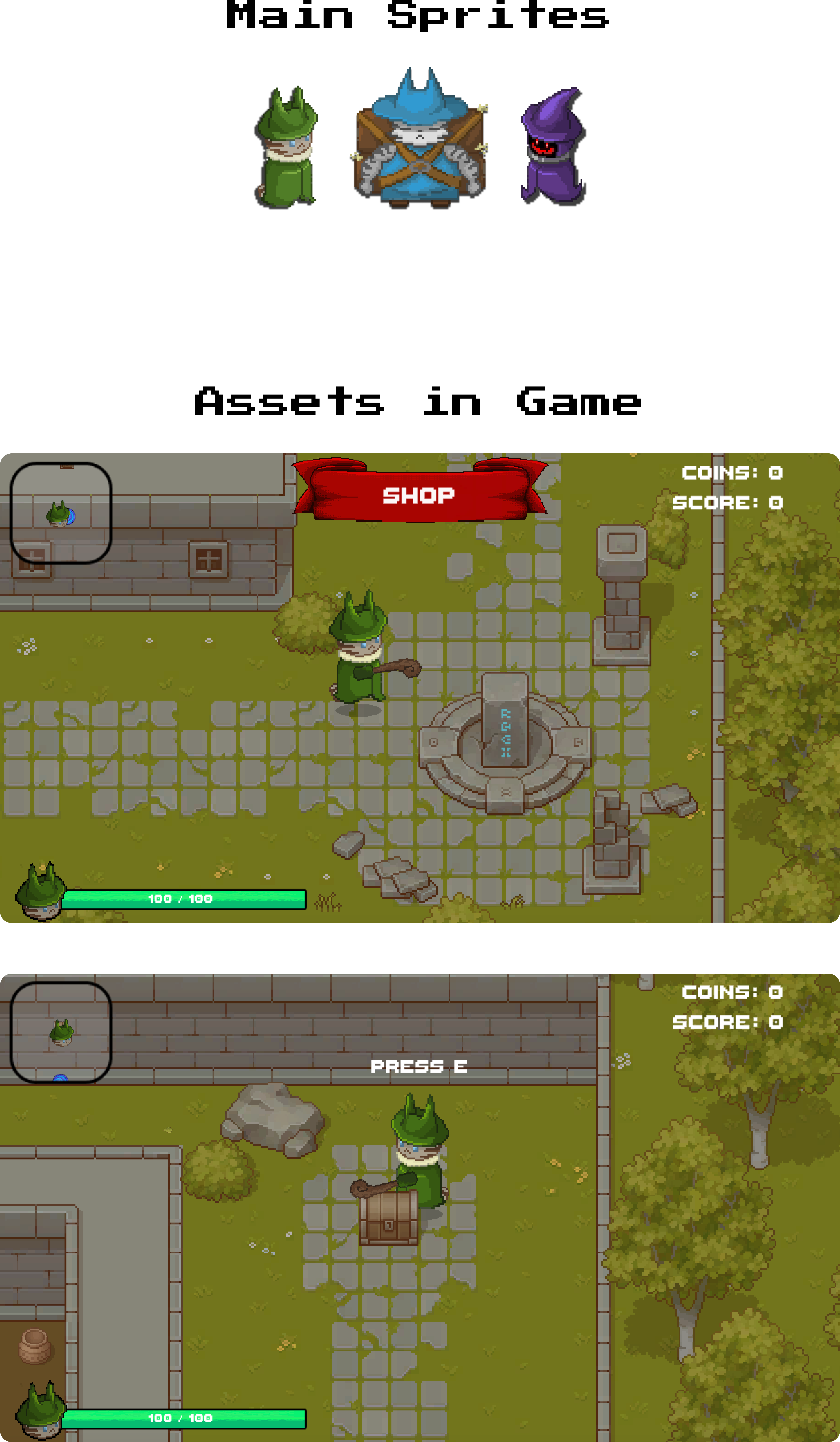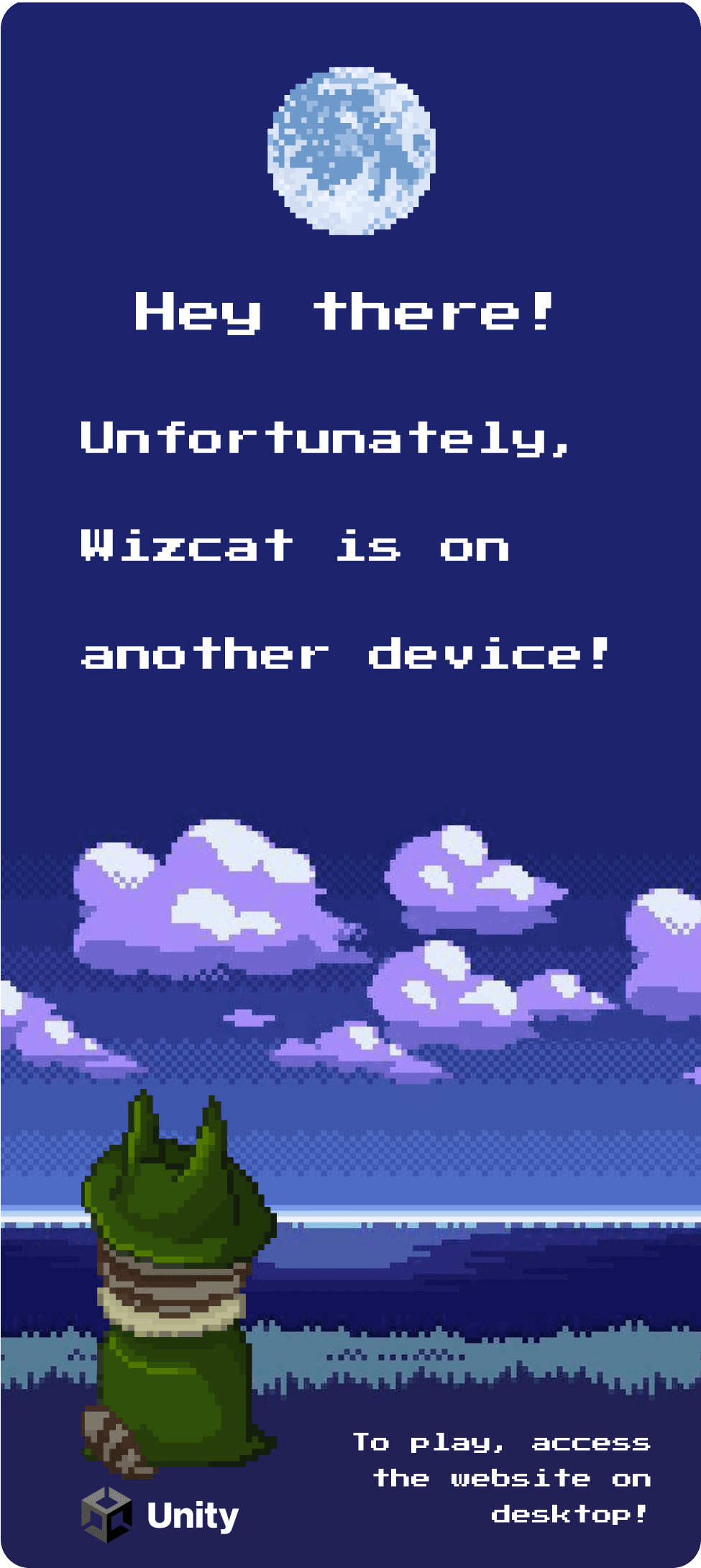School Project
Wizcat Adventure | A Top-Down Indie Game
A small indie game developed over the span of 3 months, showcasing elements of game development.
Challenge
Our goal was to develop a game that showcased key game mechanic elements. These included a solid progression system, difficulty scaling, player feedback loops, and creating a responsive, engaging combat system. Specifically, we had to ensure that the game felt progressively challenging while maintaining a fair and rewarding experience for the player. We had to create a game where we balanced the difficulty curve while giving players enough agency to feel in control of their progress. Since we chose a roguelike genre, it required us to design a randomized element in each playthrough to enhance replayability, which added another layer of complexity to the design.
Results
WizCat's Adventure was said to be the best game in the course, largely due to our excellent execution in honing in on key game mechanics while making taking the project to greater heights. We implemented a well-rounded progression system that allowed players to upgrade perks after each level, and we incorporated custom sprite work and animations, which added a polished, professional touch to the game. Our focus on making the game easy to jump into, while maintaining the core roguelike experience of increasing difficulty, made the game both accessible and engaging. By delivering a fun, responsive, and replayable experience, we exceeded expectations and set a new standard in the class.
Design Process
Research & Analysis
We conducted thorough research into the roguelike genres, focusing on both successful and less popular games. This helped us understand what gameplay elements worked well while identifying ones that fell short. We examined games like Noita and Wii Tanks, which are known for their progression systems, rewarding difficulty, and smooth gameplay loops. These games showed us the importance of giving players a sense of accomplishment after overcoming tough challenges.
We then narrowed down our research to top-down roguelike shooters (since this would be the direction of our game). We studied games such as Brotato, Helldivers, and Vampire Survivors. These games offered insights into creating fast-paced combat, intuitive controls, and meaningful upgrade systems. We studied how the game mechanics offered in these titles were achieved as well as creating addictive replayability, so that we could create an experience like that of our own.
Identifying the Problem
From our research, we identified several key mechanics to prioritize in WizCat's Adventure. Fast-paced combat, inspired by games like Noita which rewarded players meaningfully after overcoming tough challenges. The progression system from Vampire Survivors was also an inspiration for us to make gameplay smooth and engaging. We also focused on creating an upgrade system that allowed for different playstyles, ensuring each playthrough felt fresh and replayable.
As a top-down shooter roguelike, it was crucial for our game mechanics to be responsive and balanced, ensuring each playthrough felt impactful. We aimed for combat that was simple and intuitive, with difficulty scaling that kept players challenged but not frustrated. Additionally, we developed a progression loop that provided meaningful upgrade choices, balancing enemy difficulty with upgrade effectiveness to maintain a satisfying experience throughout the game.
Exploring Concepts & Designs
In the initial stages of WizCat's Adventure, we brainstormed various concepts to define the game's identity and gameplay. We explored different mascots and settings, such as a water-themed WizCat in a boat, before settling on the floating, ethereal cat in a medieval forest environment. We also debated between a 3D or 2D approach. Ultimately, we chose 2D to align with our artist's expertise in pixel art and to ensure that the game's assets felt authentic and custom-made, rather than relying on pre-made assets. Additionally, we experimented with different shooting mechanics, considering both a point-and-click system and a more traditional WASD and spacebar setup before finalizing the click-to-shoot mechanism that best suited our design vision.
Concept 1
Concept 2
Usability Testing
We conducted thorough usability testing, both within our team and with external feedback from fellow students and our instructor. During testing, we focused on core mechanics such as level progression, the reward system, and feedback mechanisms to ensure they felt balanced and satisfying.
One key area we iterated on was the feedback system, particularly in how we communicated damage and health to the player. Initially, it wasn’t always clear when the player was taking damage, so after receiving feedback, we enhanced this by incorporating a red flash and wincing animation when WizCat was hit to make taking damage feel more responsive.
Our play testers noted that the difficulty curve was too steep early on, prompting us to adjust the level scaling for a smoother progression. Which is why we revamped the perk system, initially limited in its impact. By expanding upon the number of upgrade options and adjusting their availability and pricing, we ensured that players felt a steady sense of progress and reward throughout their playthroughs.
Visual Design & Style Guide
In addition to my role as a developer, I also took on the responsibility of designing the overall visual style for WizCat's Adventure. We wanted to evoke a sense of nostalgia by drawing inspiration from the mid-’90s gaming era, particularly the 32-bit aesthetic reminiscent of the Super Nintendo. The visual elements—from the sprite work to the menus—were designed to reflect this retro gaming vibe, while still maintaining a modern polish that made the game feel fresh and relevant to today’s players.
As the designer, I focused heavily on ensuring that the UI felt cohesive with the game's retro style. This included everything from the layout and look of the HUD elements, to the menus and text presentation, which had to fit seamlessly within the game's classic Super Nintendo feel. I collaborated closely with our artist to make sure the sprite work, character animations, and backgrounds maintained that pixelated charm across the entire game. About 80% of our assets were custom made (rather than relying on the Unity asset store), to really make our game feel distinctive!

